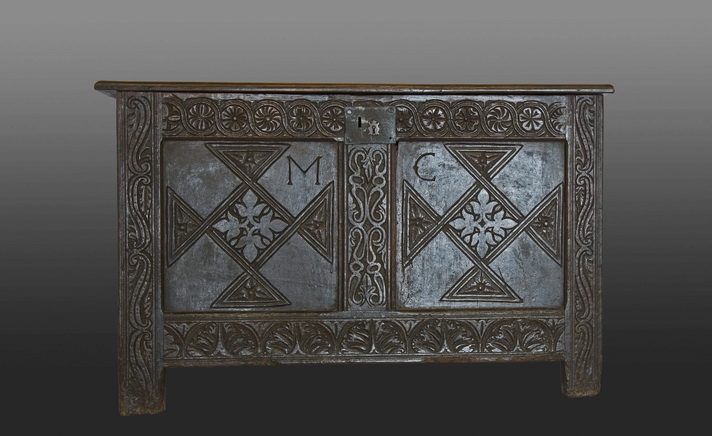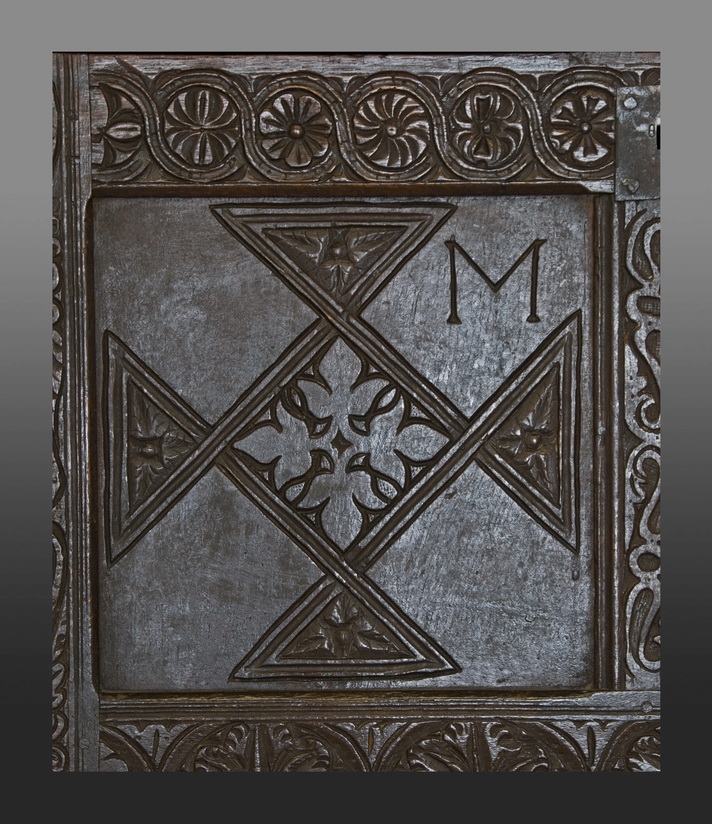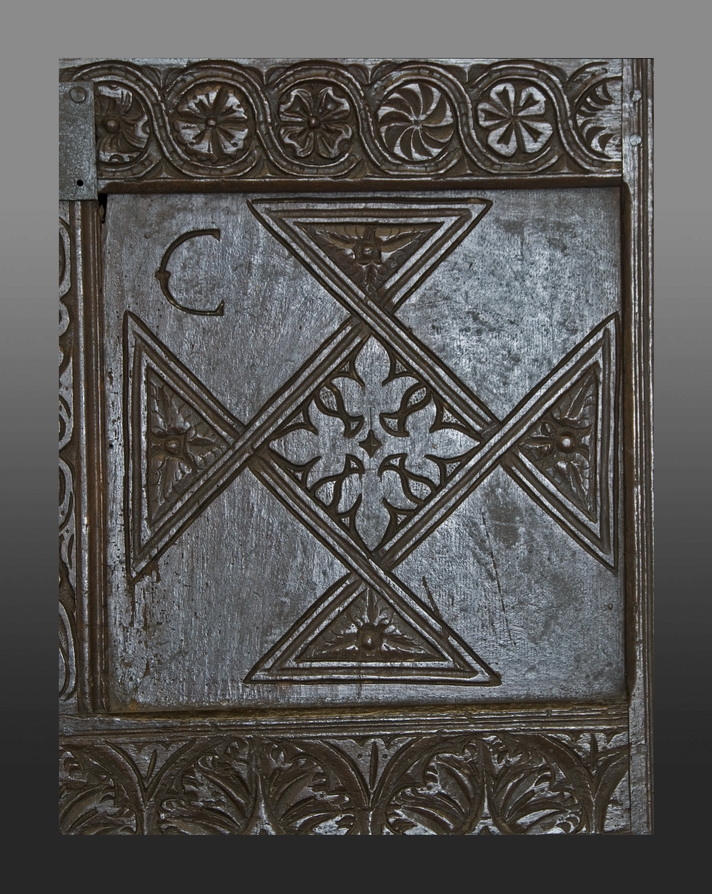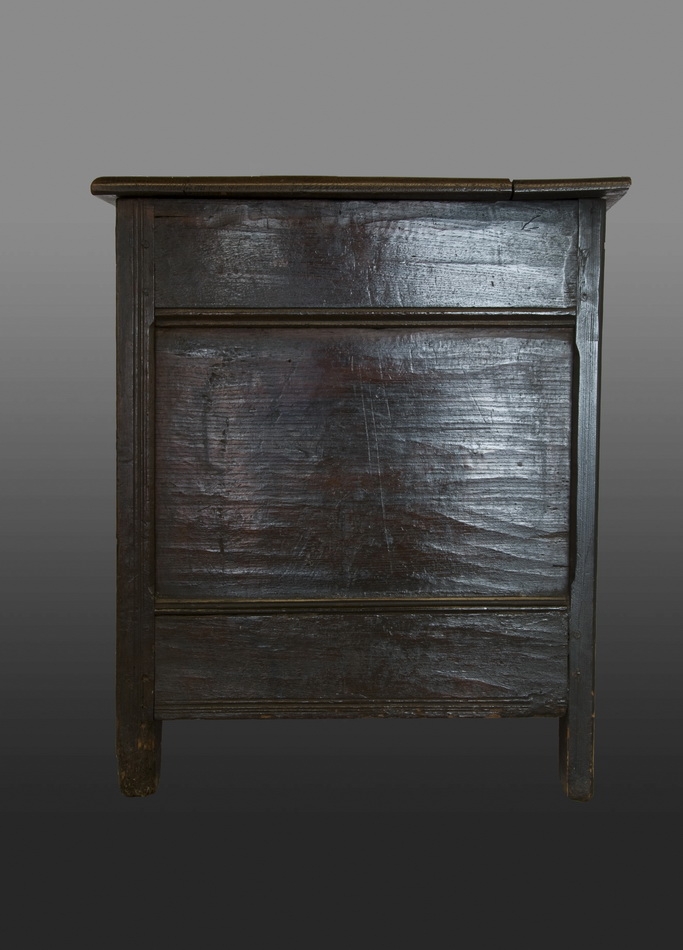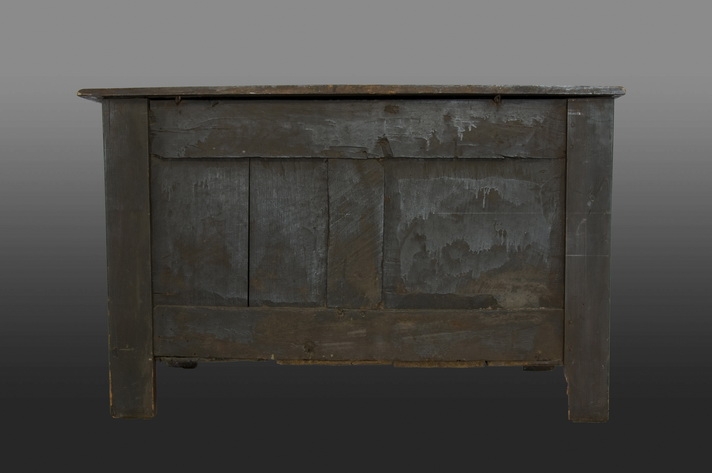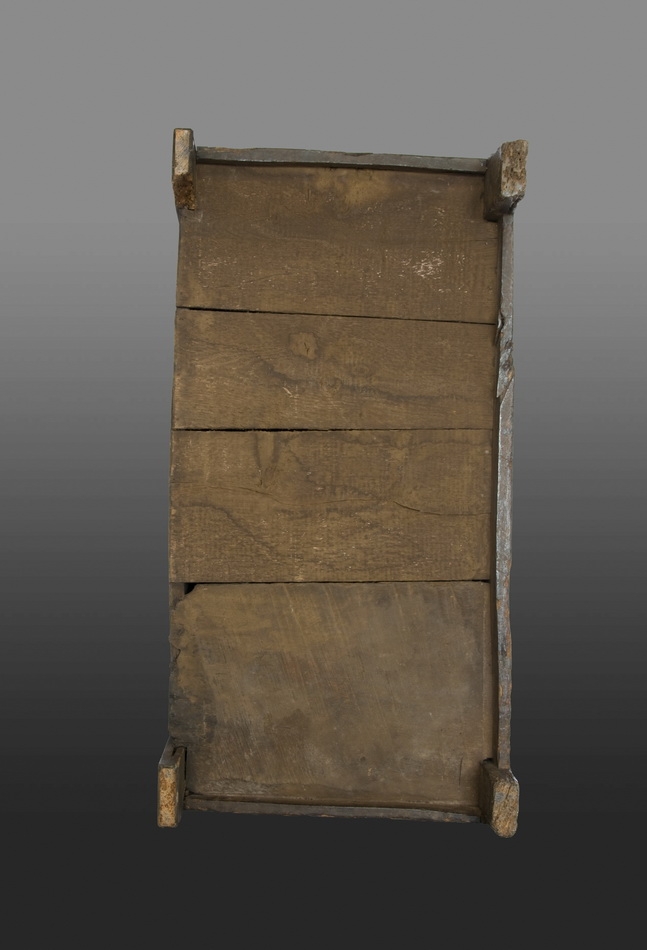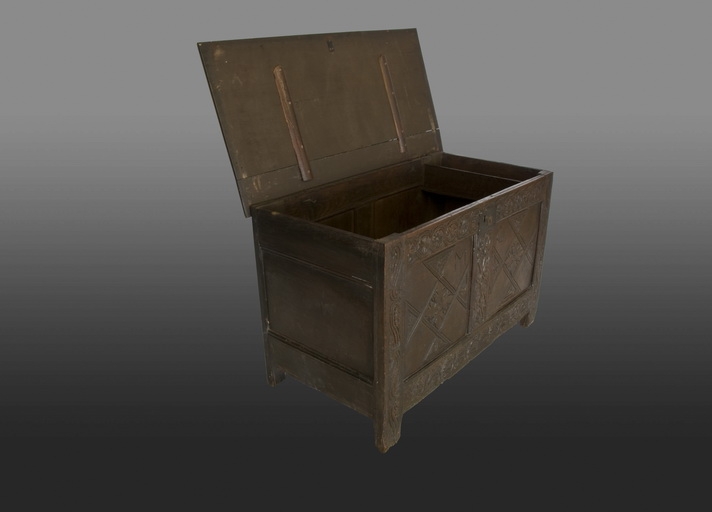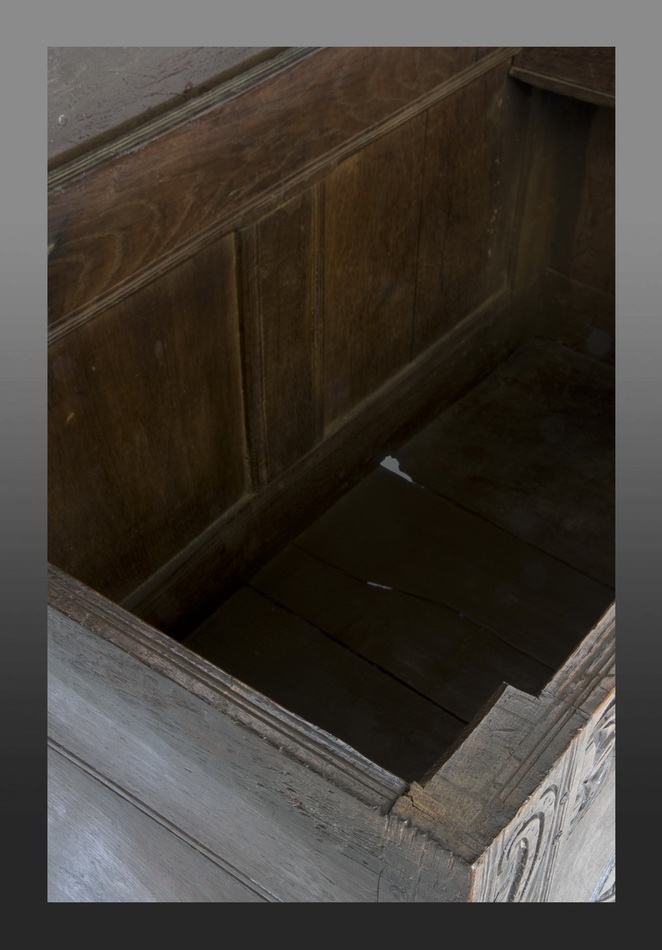Charles II East Devon chest
17th century
Exeter, Devon
W 41" × H 26" × D 21"
Stock # Ex7
SOLD
This chest was constructed within the same workshop as (cats. 6, 8, 13-16, 18), and likely by an apprentice of, the master artisan responsible for cat. 6. This is also the same workshop in which Thomas Dennis likely served his apprenticeship. The chest thus represents the work of an immediate contemporary of Dennis who remained in Exeter. Many of its design elements resonate with the work of the prior generations of Exeter joiners practices and objects constructed by Dennis shop joiners in New England. The front top rail is carved with a sequence of rosettes linked in guilloche, each differing subtly from the next. It is a simplified version of the pattern that appears on the top rail of the chest made by the master (cat. 6) and the drawer front of the box with drawer which descended in the Dennis family in New England (Bowdoin College Museum of Art). This shift to less complex execution reflects the generational and economic decline of joined furniture design as the seventeenth century advanced. The work of each successive generation of Exeter joiners appears less vibrant than the next because their practices became ever more distant from the original source of knowledge immigrant Continental masons and joiners who focused their efforts on elite-level stonework and fixed woodwork. It is also important to recognize that new and more sophisticated furniture-making techniques and materials were introduced to Exeter during the seventeenth century, making a joined oak chest constructed in 1670 far less stylish and costly than one made in 1600. The cruciform interlaces incised on the front panels of this chest are a holdover of the patterns inlaid on the panels of numerous examples of late sixteenth and early seventeenth-century Exeter joined furniture. Dennis transported the same pattern to New England, utilizing it on the front panels of a joined chest discovered in an early Ipswich, Massachusetts house in 1997 (private collection). Voids within the interlaces are filled with motifs which represent a composite of new and old. The quadripartite flowerhead motifs at the centre of each interlace reflect the later seventeenth-century taste for lighter incised carving, and are present, in a less schematized form, in several Dennis Shop joined chests. The outer voids are occupied by a thoroughly Gothic leaf and bud which appear in the same form on carving dating to 1470, not 1670. Similar ancient design references do not occur in Dennis Shop joinery, reflecting the fact that Dennis and his descendants simply had nothing late medieval to look at in New England. This chest, like the joined chest constructed by the shops master (cat. 6), makes extensive use of the V-V-ogee, applying it in virtually the same locations: the front bottom rail, the faces of side profiles of the stiles, the rear edge of the lid, the top profiles of all framing members (a usage not known in New England), and on the inner surfaces of the rear framing members. This chest (incised with the initials MC make this a single quote mark on the front panels) also serves to introduce the initialing and/or dating practices for which later seventeenth-century Exeter joiners and their clients appear to have a particular affection.
Condition Notes
Remains of original polychromy. Lid and back stiles replaced.
